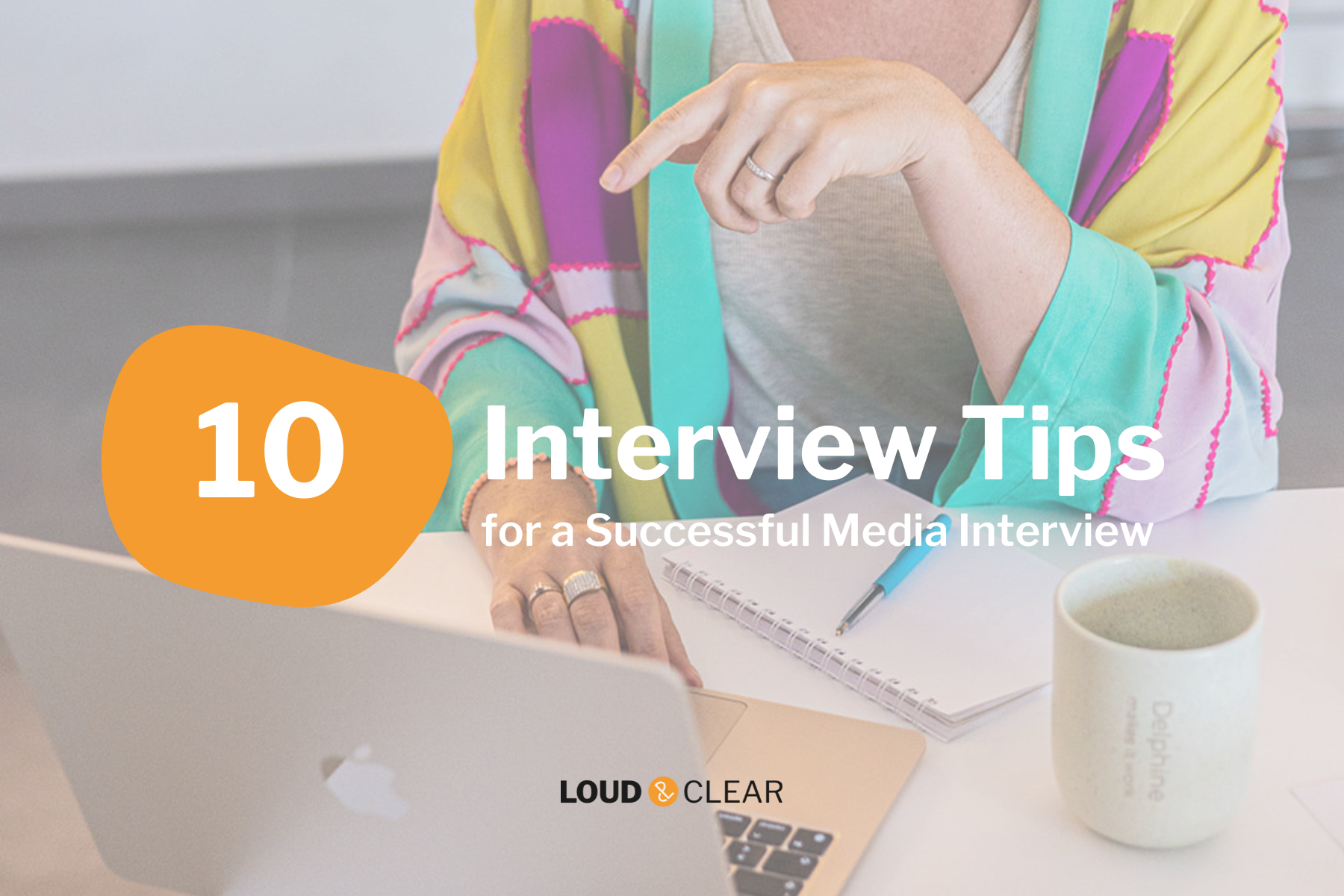In the fast-paced world of media, giving a successful interview can make or break your public image. Whether you’re promoting a product, addressing a crisis, or simply sharing your expertise, preparation and strategy are key. As experienced B2B PR agency here are ten tips to help you ace your next media interview, ending with a bonus tip, our most crucial piece of advice for any interview. Read all about it in this blogpost.
-
Determine the Goal of the Interview
Before you step into the interview, clearly define what you want to achieve. Are you looking to raise awareness about a new product, manage a crisis, or establish yourself as an industry expert? Knowing your goal will help you steer the conversation in the right direction.
-
Formulate Your Core Message
Once you know your goal, distill it into a core message. This message should be clear, concise, and compelling. It serves as the anchor for your responses, ensuring that no matter where the interview goes, you can always bring it back to your main point.
-
Make It Relevant
Your story should resonate with the audience. Speak from their perspective, addressing their needs and interests. Make your message engaging and relatable, prompting the audience to take action, whether it’s contacting your company or sharing your message.
-
Speak in Examples
Illustrate your points with concrete examples. Stories and anecdotes make your message more vivid and memorable. Examples not only clarify your message but also make it more relatable and impactful for the audience.
-
Focus on the Receiver
The ultimate goal of any interview is to communicate with your audience. Don’t get distracted by the journalist’s questions, especially if they are critical. Always remember that your main focus is the audience, not the interviewer. Answer thoughtfully and steer the conversation back to your core message.
-
Be Yourself
Authenticity is key. Speak and behave naturally, as you would in any other setting. Audiences can sense when someone is being genuine, and this builds trust and rapport. Authenticity ensures that your message is received well and remembered.
-
Prepare for Difficult Questions
Anticipate challenging or uncomfortable questions and prepare your responses in advance. Practice answering these questions in a calm and composed manner. This preparation helps you stay on message and avoid being caught off guard.
-
Practice Active Listening
Listening carefully to the interviewer’s questions allows you to provide more accurate and relevant answers. It also shows respect and can help you catch any underlying concerns or angles the interviewer might be pursuing. This skill helps in giving thoughtful and coherent responses.
-
Control Your Body Language
Non-verbal communication can be as powerful as your words. Maintain eye contact, use confident gestures, and keep an open posture. Avoid fidgeting or defensive body language, as these can undermine your message and distract the audience.
-
Know the Journalist
Research the journalist who will be interviewing you. Understand their style, the types of questions they usually ask, and their previous work. This knowledge will help you prepare more effectively, anticipate the direction of the interview, and tailor your responses to suit their style and the publication’s audience.
Bonus Tip: Remember, Off the Record Does Not Exist
The most important tip to remember is that off the record does not exist. If you don’t want something published, don’t mention it at all. Assume that everything you say can and will be used in the story. This mindset will help you stay cautious and thoughtful in your responses, ensuring you don’t inadvertently share sensitive information.
Conclusion
Mastering the art of media interviews requires preparation, strategy, and authenticity. By following these tips, you can ensure that your message is communicated effectively and positively. Always remember, in the world of media, there is no such thing as off the record. If it’s not meant to be published, it’s best left unsaid.

